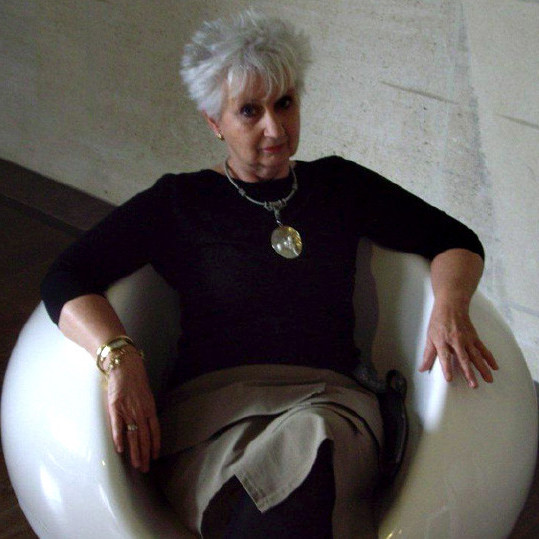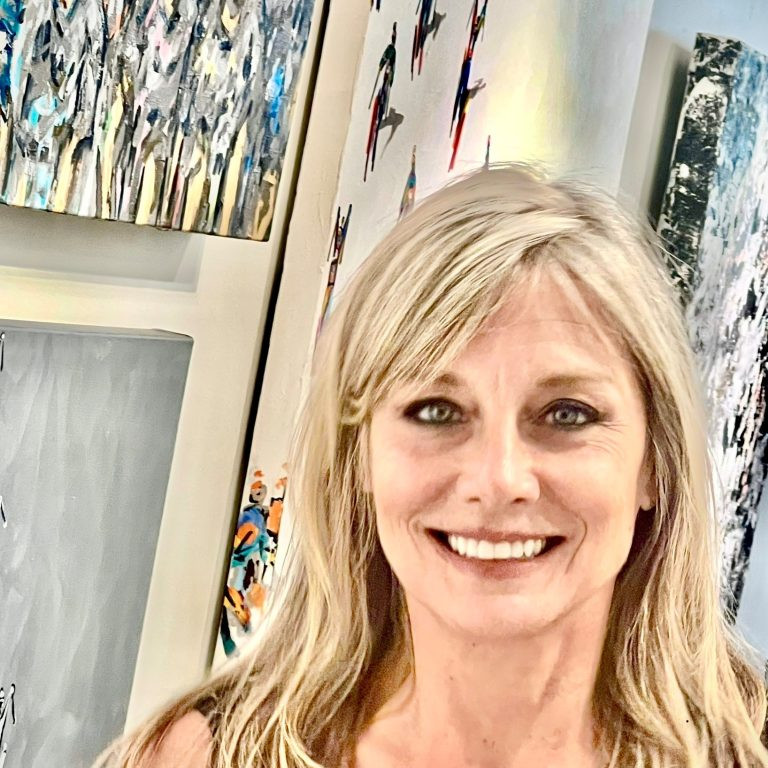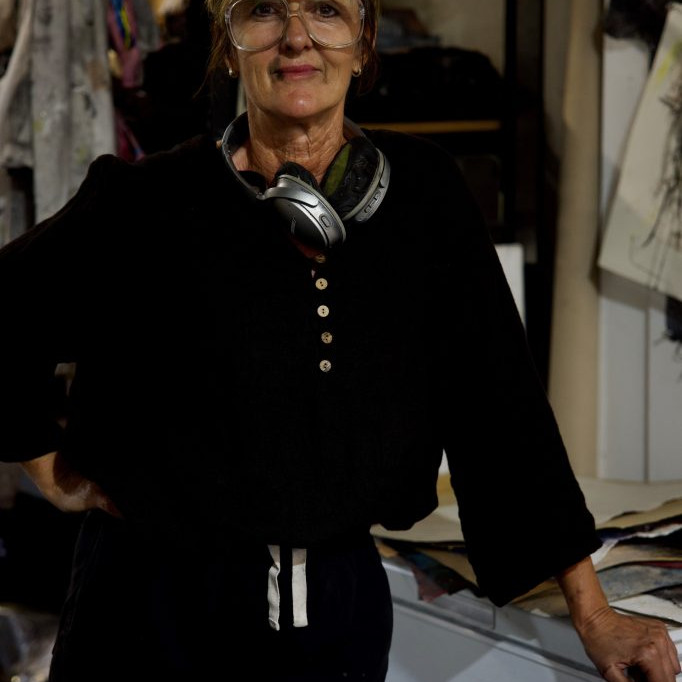Kate Blacklock Photographer / Painter
You use many mediums in your artwork. Can we begin with your photography?
Certainly.
How do you achieve your photography using computer and flatbed scanning?
All the photographic works that I do start with scanning actual objects. I use a large format flatbed scanner and lay plant material directly on the scanner and scan, sometimes moving the flowers or leaves while they are being scanned. When I started this process of “SCANOGRAMS”, more than 15 years ago I just scanned individual flowers and that was the image. Then I started arranging groups of flowers to make a single composition and this led to adding other objects in the arrangements to create still lives- a series that was very much influenced by Dutch paintings. I am continually pushing the process and found that moving the materials while they were scanning created movement and abstractions that enhanced the image. Each of the current pieces that I am making now is made up of layers of scans that are arranged in Photoshop. One image might be a composite of 30 different layers.

Pink Rock 2
How does ‘Whirl Bloom’ derive so much colour and movement?
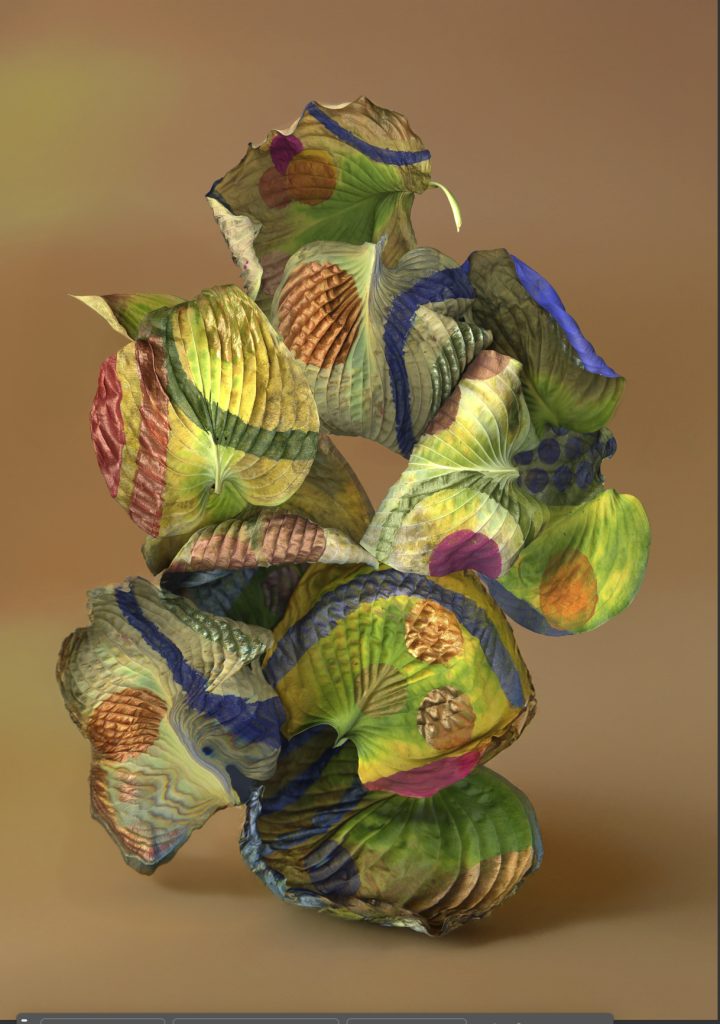
Whirl Bloom
Whirl Bloom is one in a series of compositions loosely influenced by the shapes of Chinese Scholars Rocks. I started by painting patterns and shapes on Hosta leaves from my garden. Over time and as the leaves started to dry and change shape and colour, I scan them- sometimes moving them in the process. Then I manipulate the scans in layers to create the form and finally I digitally create the space behind and around the composition of leaves. The colour is pretty accurate to the painted leaves.
‘Coleus Form’ has more of a still life format, discuss.
My early Scanograms had black backgrounds. This was a direct result of the process of scanning with the cover of the scanner removed. You can see this in ‘Hydrangea Vase’ which is multiple scans digitally stitched together into the shape of a classical vase.
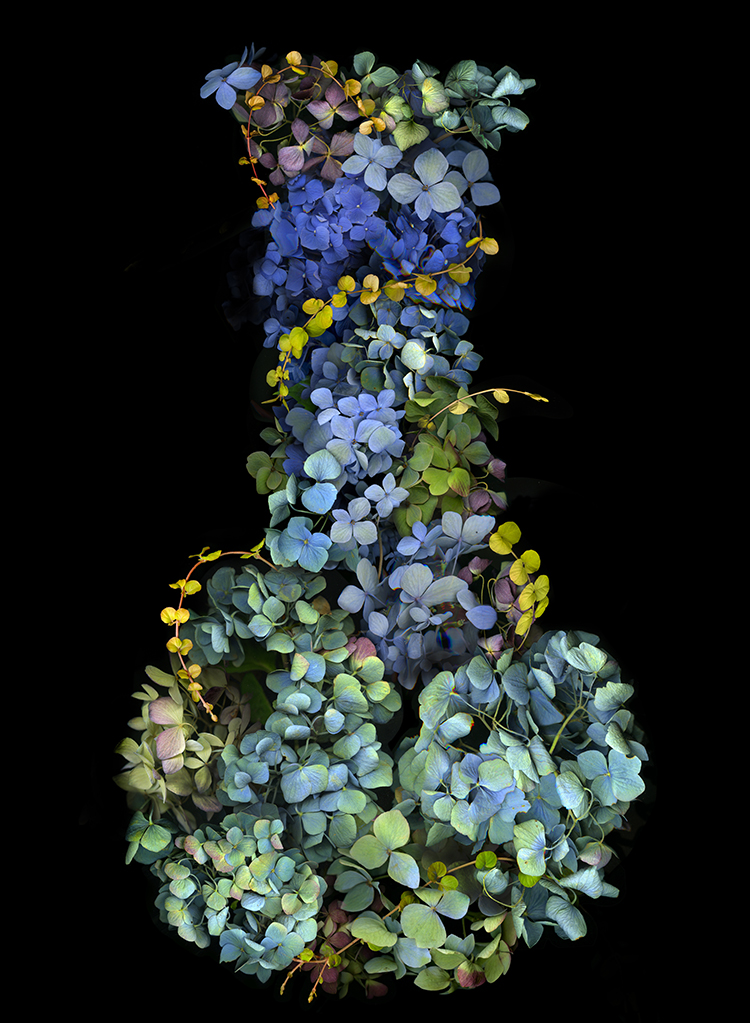
Hydrangea Vase
Over time I began experimenting with other light sources to create more depth and atmosphere and a sense of place.
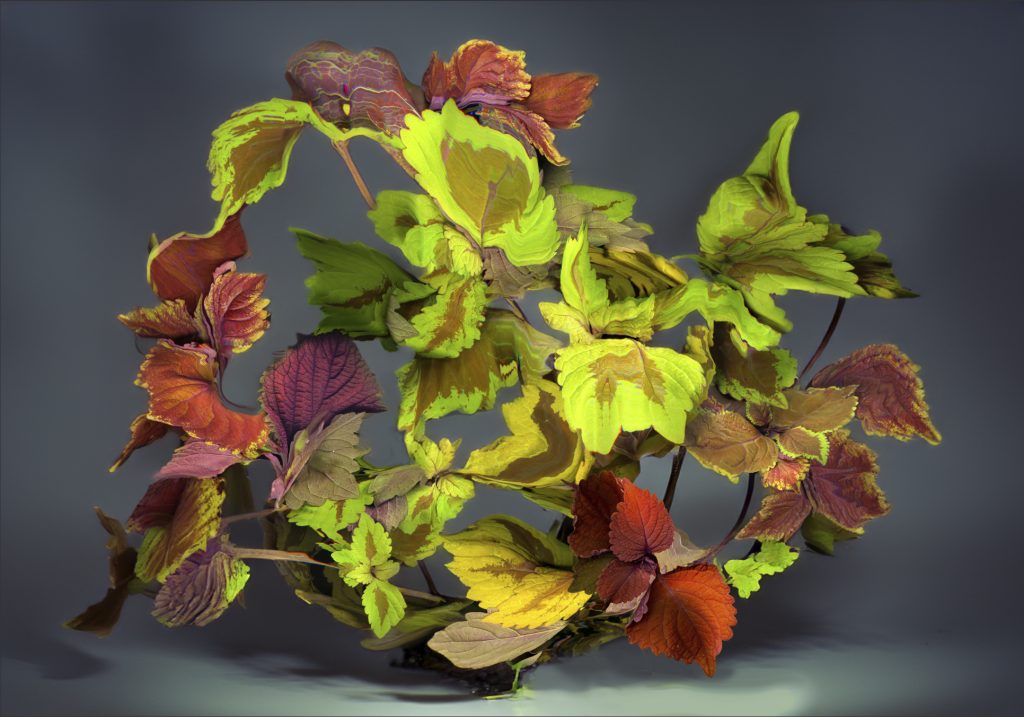
Coleus Form
With Coleus Form and the newer pieces in the Scholars Rock Series, as well as the Vessel Series, I have pushed the forms to appear more object-like by generating a space with lighting and depth and with color that enhances the forms. You can see this in both Coleus Form and Athena’s Vase which are recent pieces.

Athena’s Vase
Comment on the Chinese Rock formation of ‘Flower Rock’
Flower Rock and all the images in the Scholar’s Rock Series came from looking at GONSHI or Chinese Viewing Stones.
 Scholar’s Rock
Scholar’s Rock
These are natural rock formations that are coveted for their beauty and form miniature landscapes to be studied and appreciated.
How have you taken and used a natural source while using a manmade source of infused and dyed aluminium?
The dye sublimation surface creates a beautiful almost 3-dimensional effect and changes from different angles depending on how the light bounces off it. It adds another level of illusion.
After looking at your photography, we can see the link to your ceramic works, discuss the Vessel series.
Did this work lead you into painting?
For many, years I made ceramic sculpture and my introduction to the material was through making pottery starting when I was 12. My early vessel sculptures used the form to express ideas about objectification and the male gaze.
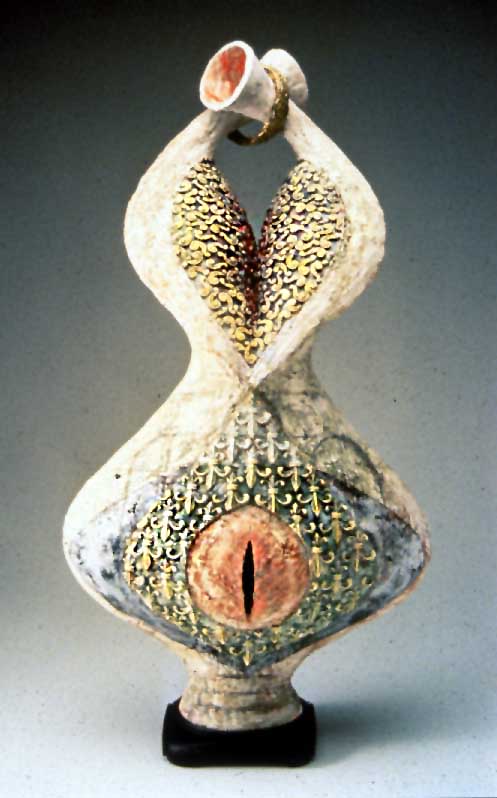
Cross Your Heart
I was drawing from the classical forms of the porcelains of the 18th and 19th centuries. I returned to that form in the scanograms in the Vessel series- but the influence here was also from petal arrangements I have seen in my travels that create elaborate images such as once spotted on the floor of a church in Italy. So no, the painting evolved more from my sculpture on which I had been painting with more elaborate imagery on the surface of the figurative.
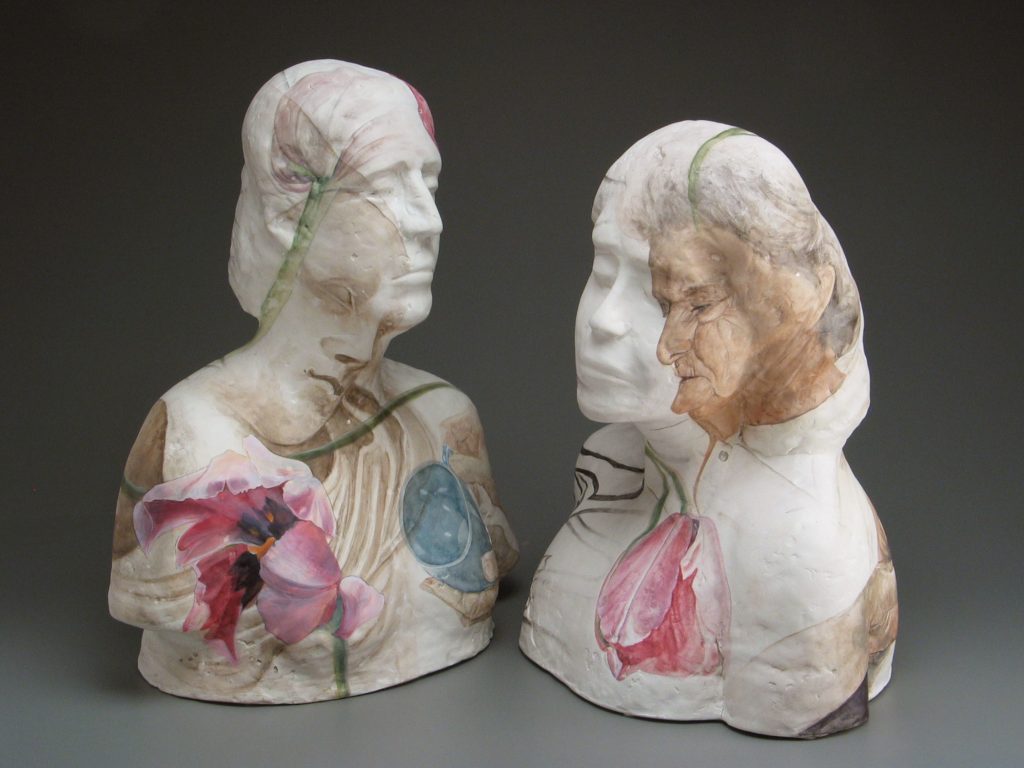
Duet
How was the pandemic an influencer to your painting?
My current series of paintings started during the isolation period of the pandemic. While the external world diminished in scope, my focus shifted inward, both literally and figuratively. My home served as a backdrop for creating tableaus that explored themes of motherhood, aging and identity.
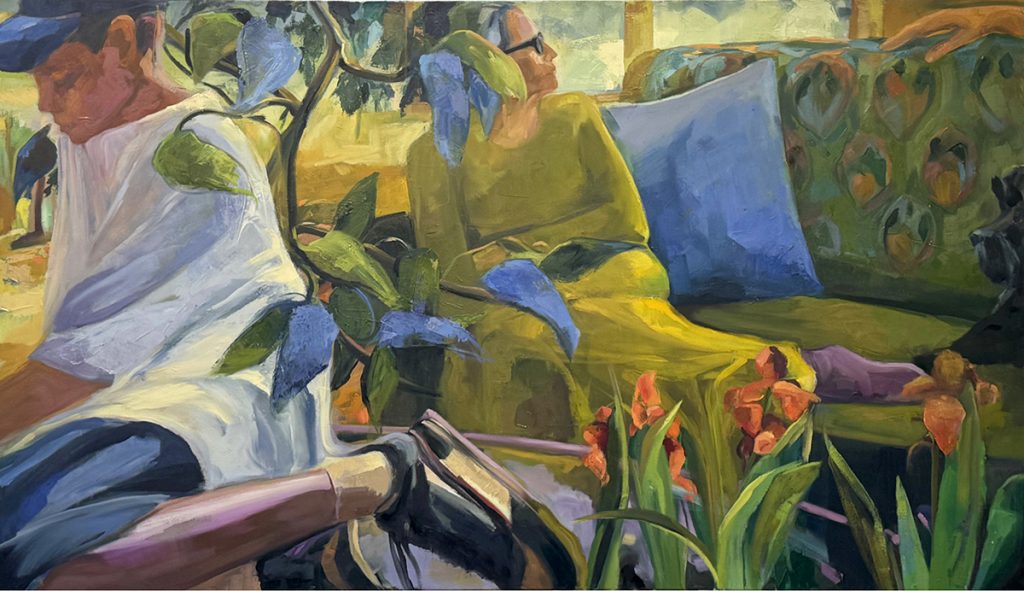 Inside Out
Inside Out
More recently I have integrated the suburban landscape around me, an element that has always appeared mysterious and somewhat off kilter, as a character within the narrative. The pandemic and its aftermath resulted shifts and distortions in the perception of time. Memories overlapped with present realities and future uncertainties. The figures and animals depicted in the paintings embody this phenomenon through their juxtaposition. They do not necessarily inhabit the same space or even the same temporal plane.

Does having your studio by your home have pros and cons?
I have had my studio at my house for over 30 years. There are only pros to this for me. I am very fortunate. I can work whenever I want and whenever I have time. It is right there. There is no separation for me between my living and my art making. I raised a son by myself and having a space that was right there made it possible for me to continue making. My narrative paintings are set in my neighbourhood or in my home and my scanagrams are made from things I grow in my garden. With these, I can simply go outside and find what I might need to add to the composition I am working on. This also has meant that I go back and forth between the two bodies of work somewhat dependent on the light in my studio (painting) and what is happening in my garden (scanograms). I also don’t need to work with others around- in fact I can’t. So, the solitude suits me. I teach 4 months of the year, so I feel I have the perfect balance
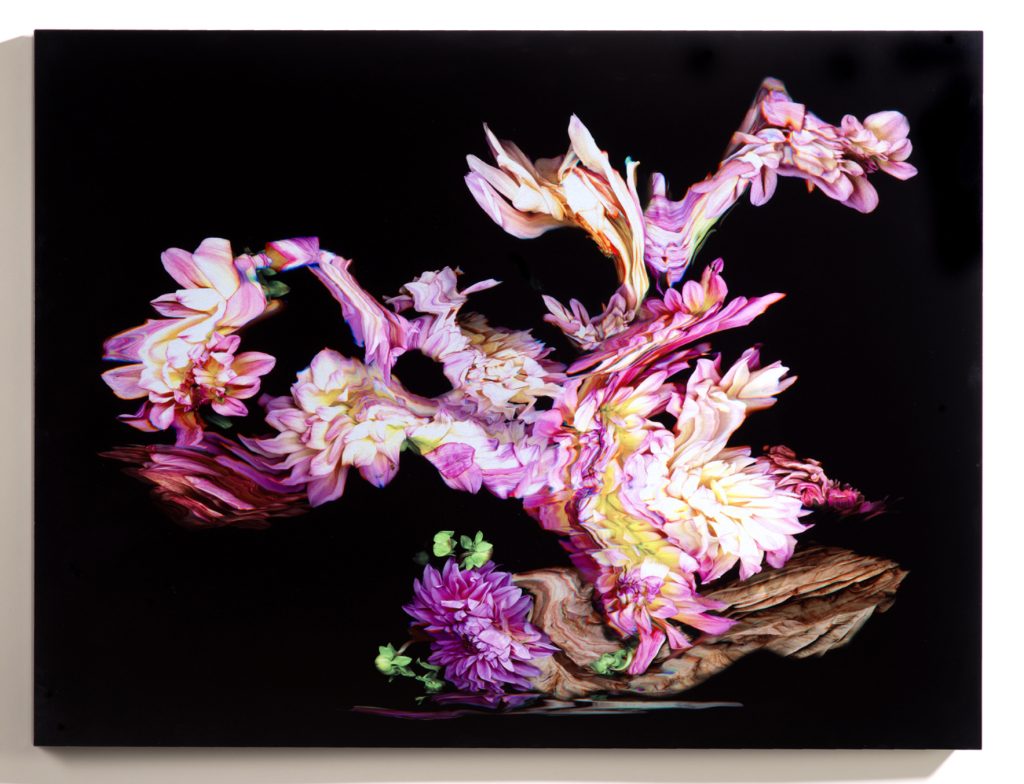
Flower Rock#2
Tell us about one work that has been a huge influence on your current art?
Because I move back and forth between media, I can’t think of one piece that has propelled me in any particular direction. I am motivated by challenges and never wanting to feel that I am just cranking things out. I am currently working on the digital photographs, after a very focused period of painting. What has been interesting is that I have found that I am thinking in a more “painterly” way, particularly in relationship to light and form with the newest scanograms.
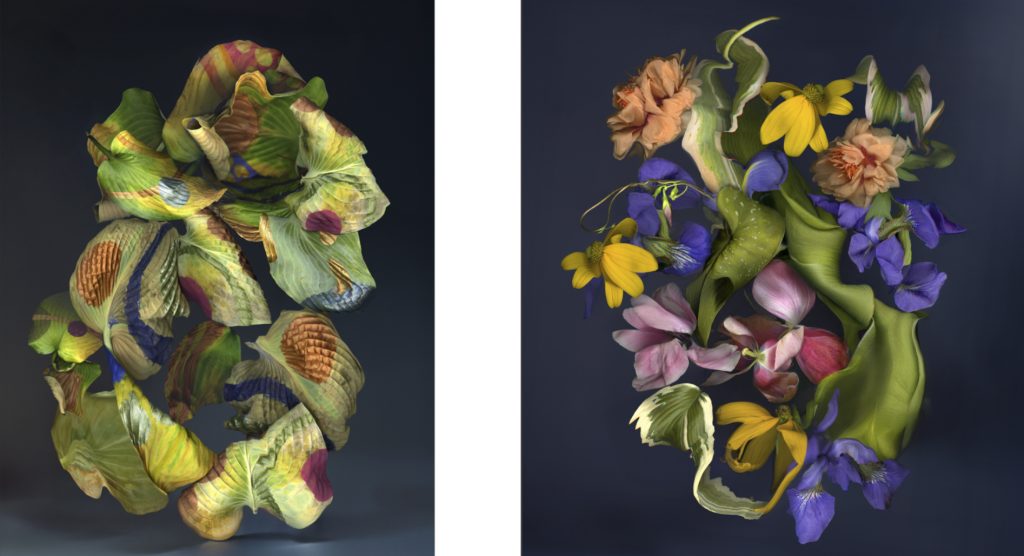
New Work
Contact:
Kate Blacklock
Website: kateblacklock.com
Email: kate@kateblacklock.com
Instagram: Kate.Blacklock
Deborah Blakeley, Melbourne, Australia
Interview by Deborah Blakeley, October 2025
Images on these pages have all rights reserved by Kate Blacklock

Think a colleague or friend could benefit from this interview?
Knowledge is one of the biggest assets in any business. So why not forward this on to your friends and colleagues so they too can start taking advantage of the insightful information the artist has given?
Other artists you may be interested in:

